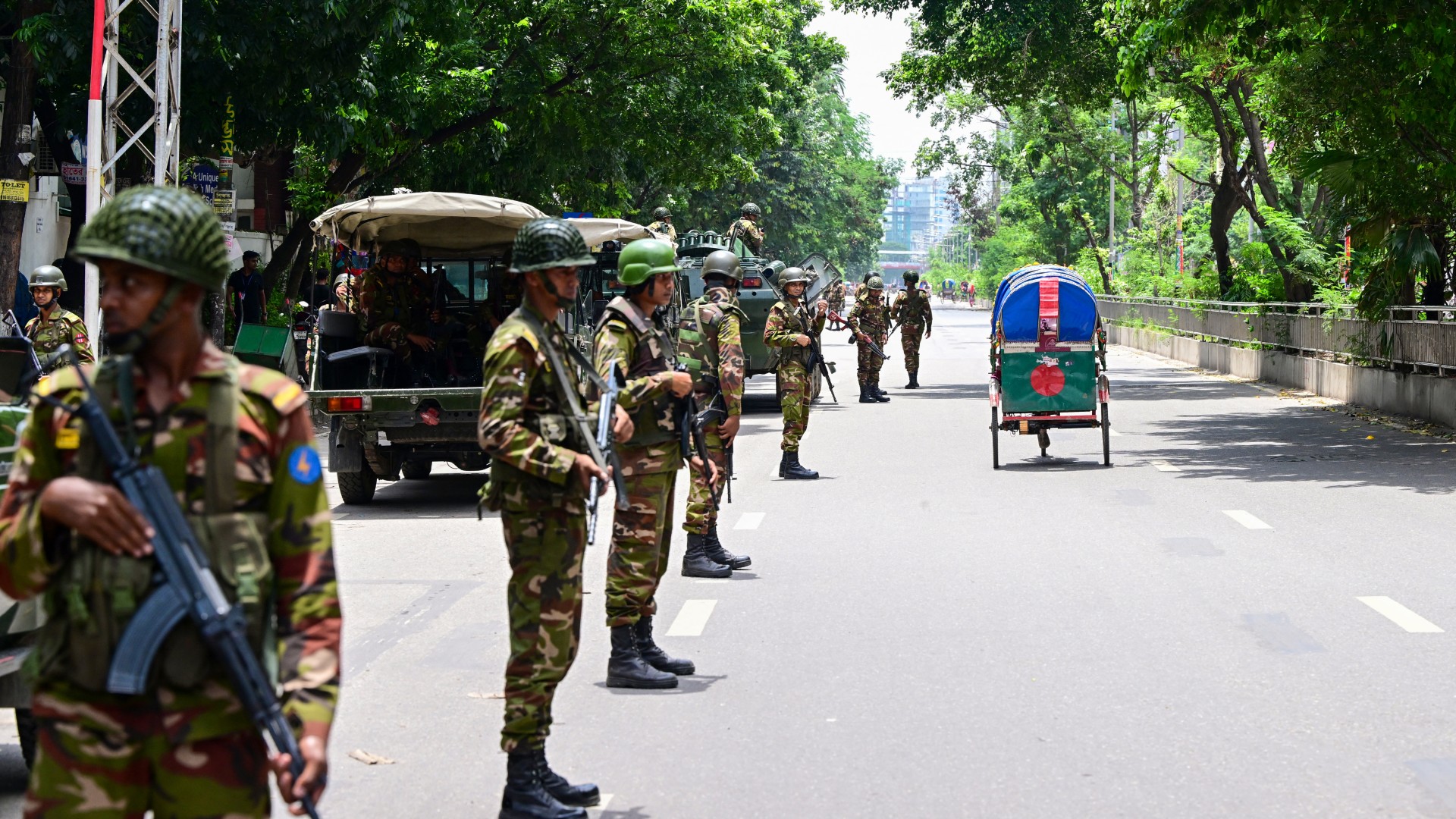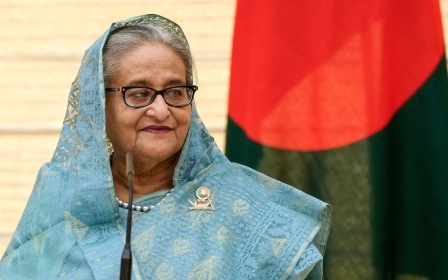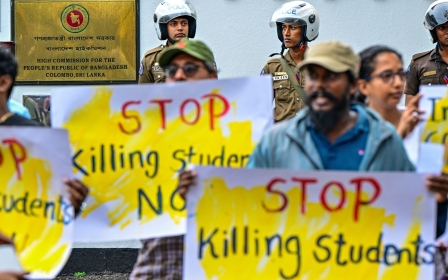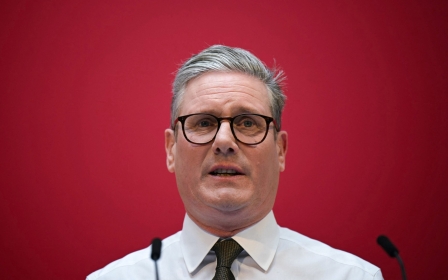How Bangladesh's student protesters forced Sheikh Hasina from power
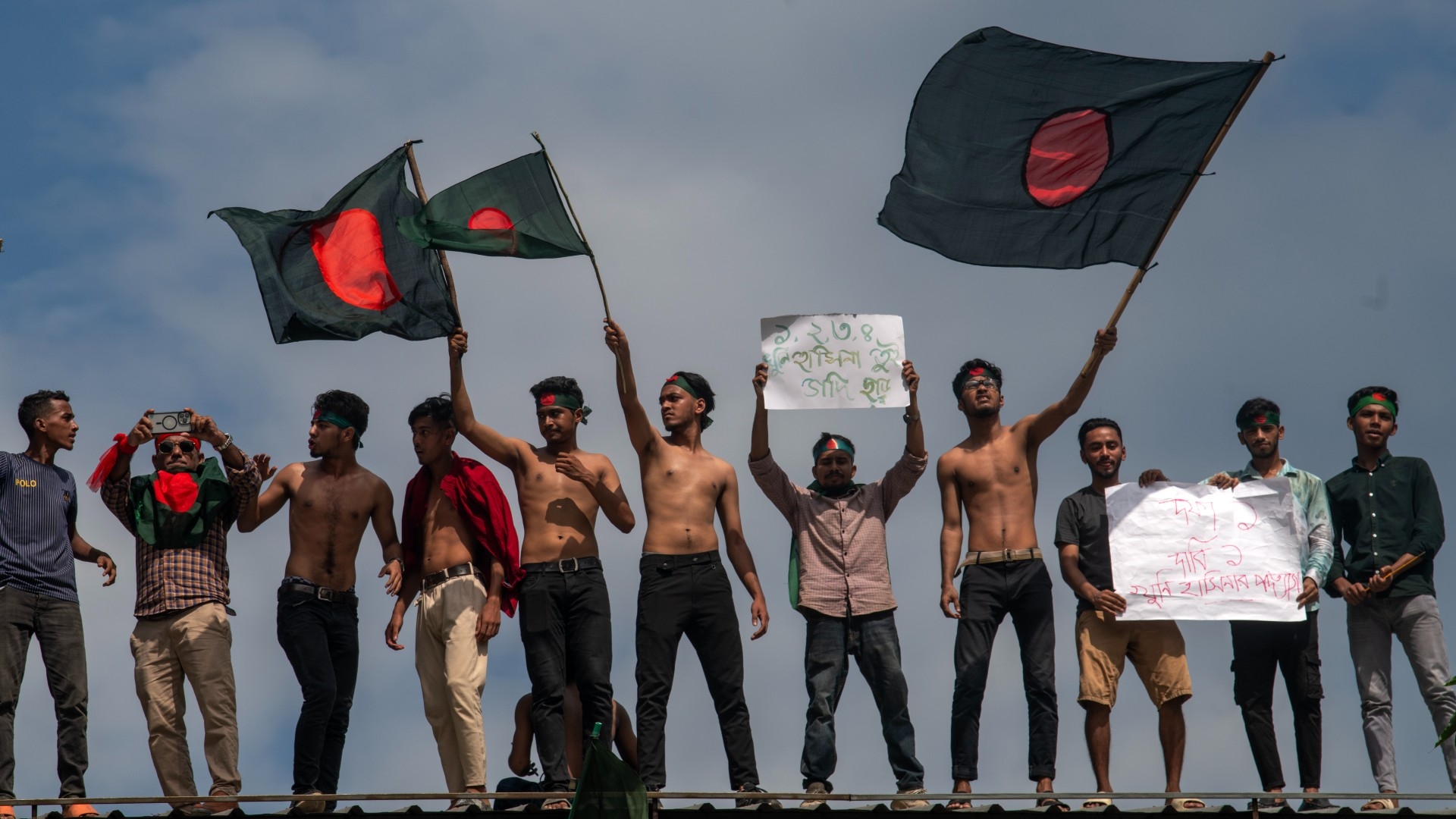
Bangladeshi Prime Minister Sheikh Hasina resigned and fled the country on Monday following weeks of anti-government protests that resulted in hundreds of people killed.
An army source and officials at the Bangladesh High Commission in New Delhi confirmed that Hasina, 76, had left the capital, Dhaka, for a "place of safety".
The BBC reported that the former prime minister's helicopter was heading towards India, though MEE could not independently verify the claim.
The development came as local media reported that thousands of people had entered the prime minister's residence. This followed a violent crackdown on protesters the previous day, which left at least 95 people dead and hundreds more wounded.
Here's everything you need to know about the unrest in Bangladesh.
New MEE newsletter: Jerusalem Dispatch
Sign up to get the latest insights and analysis on Israel-Palestine, alongside Turkey Unpacked and other MEE newsletters
What prompted the student protests?
Hasina's 15 years in power were rife with accusations of forced disappearances, extrajudicial killings and the suppression of opposition figures and her critics.
Tensions escalated in July when students began protesting against a quota system that mandated 30 percent of all government jobs go to families of those who fought for the country's independence from Pakistan in 1971.
Over the years, these benefits were extended to include the children and grandchildren of liberation fighters, as well as ethnic minorities and disabled people, amounting to 56 percent of all government jobs.
Many argued that the quota system directly benefited Hasina and her Awami League party, which played a major role in achieving the country's independence and has been in power since 2009.
Young Bangladeshis said the system emboldened corruption and made it nearly impossible for others to secure government jobs. Observers noted that the quota was used to reward loyalists with lucrative jobs.
In 2018, the government scrapped the quotas following student protests. However, in June, a high court ruling reinstated the policy after relatives of the 1971 veterans filed petitions, sparking renewed student protests.
The new ruling meant that less than half the jobs were open to merit-based applicants amid an unemployment crisis.
With more than 18 million young Bangladeshis struggling to find work, the quota system infuriated graduates hoping for stable employment.
Last week, the Students Against Discrimination group, which led the job quota protests, relaunched their demonstrations, demanding a public apology from Hasina and the resignation of government ministers and university chancellors.
When did the violence escalate?
Student agitations against the high court's measure began in early July but escalated when Hasina equated protesters to "razakars", a term for those who collaborated with the Pakistan Army during Bangladesh’s independence. This labelling fuelled widespread vitriol and hate against the student protesters.
Tensions peaked on 16 July when police officers attacked student protesters at Dhaka University. At least 100 people were injured in the aftermath of this attack.
One day later, crackdowns spread from campus to campus across the country, resulting in six deaths.
Over two days, paramilitary forces, including a counterterrorism unit, were deployed on the streets. Police used rubber bullets, sound grenades and tear gas to disperse crowds.
Hasina's government, which has defended the quota system, responded by slowing or cutting internet access, imposing a curfew and implementing a shoot-to-kill order for those defying the curfew.
By 19 July, at least 19 more had been killed. By the end of the weekend, it was clear that the death toll had surpassed 100.
Amid a communication blackout, reports suggested the death toll could be several times higher.
On 4 August, after a brief lull in protests, close to 100 people were killed and the demonstrations spiralled into a campaign demanding Hasina's ouster.
Middle East Eye delivers independent and unrivalled coverage and analysis of the Middle East, North Africa and beyond. To learn more about republishing this content and the associated fees, please fill out this form. More about MEE can be found here.


